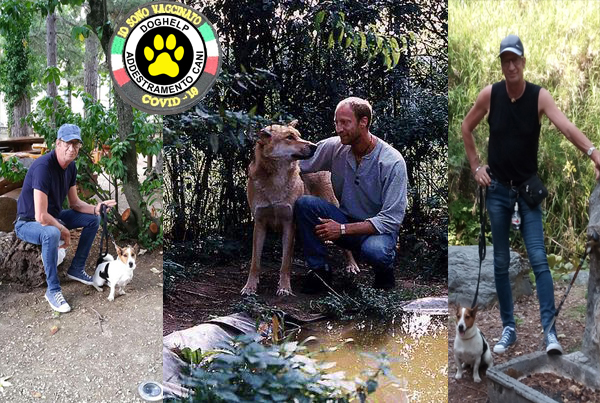Lifting the dog;
You will think: “Why an article about lifting the dog?”
Well…. the lifting of the dog has some important functions and even more often I see that owners lift their dog completely wrong.
When you lift the dog, it is very important to keep his back straight. Especially dogs with a long back, such as the Dachshund, Jack Russell, Shepherd, have a relatively long backbone. The vertebrae are relatively further apart than with “short” dogs. When you lift the dog incorrectly (photo), you force his back into an unpleasant and unnatural posture for the dog, so that you can hurt and even damage the backbone of the animal. 
When lifting the dog you must divide the weight of the animal by supporting it with one hand (and arm) under the sternum and with the other hand under the belly. (see picture).  Also make sure that you do not unnoticeably pinch the dog in his guts. I prefer to support the dog under his stomach with the hand upside down. (Photo).
Also make sure that you do not unnoticeably pinch the dog in his guts. I prefer to support the dog under his stomach with the hand upside down. (Photo).
Lifting the dog logically has various functions. Move the animal. To uphold the animal for protection etc. However, lifting the dog also has a function with regard to your leadership and dominance over the dog. By lifting the dog you show the animal that you are stronger than him and you have full power over him. For this reason, many dominant dogs start to struggle when they are lifted. Also dominant dogs are unable to lift their leader and so they learn in this way that you are the undisputed leader.
Two other important arguments for lifting a dog are to offer him safety or to try to prevent wrong learning experiences. In case of emergency, when the dog threatens to be attacked by a larger and clearly stronger dog, you can lift him. There is a danger that you can be bitten by the attacking dog while the dog is being lifted. So always try to estimate the situation and think ahead. Lifting a vulnerable dog can therefore be a good idea, but should be done calmly and as naturally as possible.
When you visit a busy market with your dog, it is better to carry the dog than to take the risk that the animal is kicked by bystanders. Especially with young puppies, such an unpleasant experience can cause them to remain afraid of places where many people are present, for the rest of their lives.
It is therefore very important to lift the dog from an early age on a daily basis in a good way and to make it clear to your leadership and to learn that he should allow it quietly.
If the dog exhibits undesirable behavior, for example when he breaks an object or when a puppy is in need, then you can lift the dog, just like his mother, at the neck skin and bring it to the place you have designated. With a puppy, that will also speed up his potty training. (Photo)
Practice the animal from an early age, even with being lifted at the neck skin . If the dog has never got used of being lifted by you, then you may have a chance that the animal will bite you when you lift it at its neck skin later in life.
Do you have questions or comments? Then I would like to hear that




